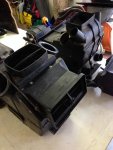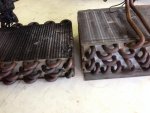Thanks Greg. So how do I change the fan speed to run on low as the default setting when the a/c is turned on? The two speed sensor behind radiator can be wired into for increased speed as you described.
My fans run on full speed as soon as the AC is turned on with both CX and Xantia. I've no idea what was standard but it makes sense to me to have maximum airflow as the AC is on because it is hot mostly.



